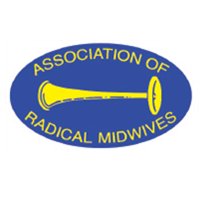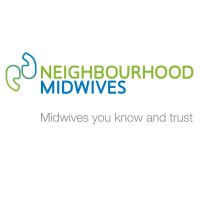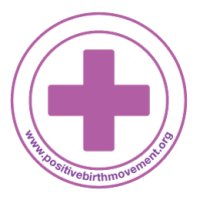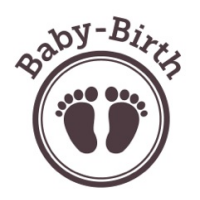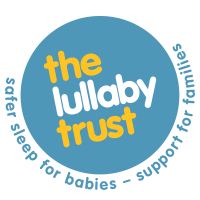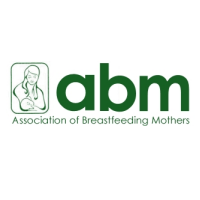The research evidence supporting the need for a woman to have a midwife who she knows and trust are extensive.
Manifesto References
The text in italic give the Manifesto text for which the reference was given.- Only 1 in 5 women will be attended at any point in their labour by a midwife they have met before
Redshaw M, Heikkila K. Delivered with care: a national survey of women's experience of maternity care 2010.
Oxford: National Perinatal Epidemiology Unit, University of Oxford; 2010.
Available from: www.npeu.ox.ac.uk/files/downloads/reports/Maternity-Survey-Report-2010.pdf - Only one in 10 will have a midwife they have met before, while in other places nearly 1000 of them will be left
alone in labour or after the birth when they are frightened
Healthcare Commission. Maternity services review 2007 Data tables for 148 trusts in England.
Available from: http:/www.cqc.org.uk/aboutcqc/howwedoit/involvingpeoplewhouseservices/patientsurveys/maternityservices.cfm">webarchive.nationalarchives.gov.uk/20101014074803/http:/www.cqc.org.uk/aboutcqc/howwedoit/involvingpeoplewhouseservices/patientsurveys/maternityservices.cfm - Over 1 in 4 women will have a caesarean operation.
NHS Information Centre. NHS maternity statistics, England: 2011-2012.
Available from: http://www.ic.nhs.uk/statistics-and-data-collections/hospital-care/maternity/nhs-maternity-statistics-england-2011-2012
or http://www.hesonline.nhs.uk/Ease/servlet/ContentServer?siteID=1937&categoryID==1941 - 8 in 1000 babies die at or around the time of birth.
Sands. Preventing babies' deaths: what needs to be done. Sands; 2012.
Available from: http://www.uk-sands.org/fileadmin/content/Media/PREVENTING_BABIES_DEATHS_REPORT_2012LR02.pdf - One in ten women will become depressed following the birth. Just over 1 in 3 women will appraise their experience as 'traumatic'
and 2 in 100 women will develop post tramatic stress disorder (PTSD).
Alder J, Stadlmayr W, Tschudin S, et al. Post-traumatic symptoms after childbirth: what should we offer?
J Psychosom.Obstet Gynaecol. 2006;27(2):107-12. - Tyler S. Commissioning maternity services. A resource pack to support Clinical Commissioning Groups.
Available from: http://www.commissioningboard.nhs.uk/files/2012/07/comm-maternity-services.pdf - The way a woman is supported and cared for during her pregnancy and birth, and in the days and weeks following, profoundly affects her and her partner's ability to parent their baby
Allen G. Early intervention: the next steps. London: The Early Intervention Review Team; 2011.
Available from: http://dwp.gov.uk/docs/early-intervention-next-steps.pdf - Odent M. The scientification of love. Free Association Books; 1999.
- Solter A. Tears for trauma: birth trauma, crying, and child abuse. 1996. Available from: http://www.primalspirit.com/pr2_1solter_tears.htm
- The way that a baby develops in utero and in the weeks after birth is influenced by the quality of care that parents receive
Field F. The foundation years: preventing poor children becoming poor adults. The report of the Independent Review on Poverty and Life Chances. London: Independent Review on Poverty and Life Chances; 2010. Available from: http://povertyreview.independent.gov.uk/final_report.aspx#] - Quality maternity services should be defined by the ability to provide a safe transition to parenthood and a positive and life enhancing experience.
Midwifery 2020 UK Programme. Midwifery 2020: delivering expectations. Edinburgh: Midwifery 2020 UK Programme; 2010.
Available from: http://midwifery2020.org.uk/documents/M2020Deliveringexpectations-FullReport2.pdf - Providing a model which ensures that women can be seen in a community setting where appropriate and focuses on the needs of the woman and her baby and enhances the woman's experience.
Royal College of Obstetricians and Gynaecologists EAG. High quality women's health care: a proposal for change. London: RCOG; 2011. - One in five women is left alone in labour.
Care Quality Commission. Maternity services 2010.
Available from: http://www.cqc.org.uk/public/reports-surveys-and-reviews/surveys/maternity-services-survey-2010 - 10-15% of women suffer from postnatal depression.
National Collaborating Centre for Mental Health. Antenatal and postnatal mental health: clinical management and service guidance.
National Clinical Practice Guideline Number 45. London: The British Psychological Society and The Royal College of Psychiatrists; 2007.
Available from: http://www.nice.org.uk/guidance/index.jsp?action=byID&o=11004 - 8% of babies are born prematurely.
Office for National Statistics. Preterm births data (2007, Accessed 26 March 2013). Available from: www.ons.gov.uk/ons/publications/re-reference-tables.html?edition=tcm%3A77-50818 - 69% of new mothers start breastfeeding exclusively, but a week after birth, only 46% are doing so.
Health and Social Care Information Centre. Infant feeding survey 2010. Health and Social Care Information Centre (IC); 2012. Available from: http://tinyurl.com/afu6yb2 - The birth rate increased by 22% between 2001 and 2011.
Royal College of Midwives. State of maternity services report 2012. London: RCM; 2012. - More older first-time mothers are giving birth.
HM Government. General Household Survey. Available from: http://data.gov.uk/dataset/general_household_survey - There is an acute shortage of midwives.
Front Line Care: the future of nursing and midwifery in England. Report of the Prime Minister's Commission on the Future of Nursing and Midwifery in England 2010. London: The Prime Minister's Commission on the Future of Nursing and Midwifery in England; 2010. Available from: http://cnm.independent.gov.uk/wp-content/uploads/2010/03/nursing_midwifery_report.pdf - There is no financial incentive to provide continuity of midwifery care, but the improved outcomes demonstrated by this service generate significant savings.
van der Kooy B. Continuity of care: the elusive key to improved maternity outcomes. Pract Midwife 2013;16(4):16-7. - Centralisation of maternity care in fewer, very large impersonal obstetric units create increased travel time for women in labour.
NCT. Location, location, location: making choice of place of birth a reality. London: NCT; 2009. - Student midwives have a high drop out rate because after qualification they are unable to practise in the way that they wished.Centre for Workforce Intelligence.
Workforce risks and opportunities: midwives. Education commissioning risks summary from 2012. Woking: Centre for Workforce Intelligence; 2012. Available from: http://www.cfwi.org.uk/publications/midwives-workforce-risks-and-opportunities-education-commissioning-risks-summary-from-2012 - Fewer women having the support they need to have straightforward births
Downe S, McCormick C, Beech BL. Labour interventions associated with normal birth. British Journal of Midwifery 2001;9(10):602-6. - Fewer women having one-to-one midwifery care in labour in obstetric units.
Birthplace in England Collaborative Group. Perinatal and maternal outcomes by planned place of birth for healthy women with low risk pregnancies: the Birthplace in England national prospective cohort study. BMJ 2011;343:d7400. - The required ratio of one midwife to 28 women is not being met.
Smith H. Daily Hansard debate 17 Jan 2012. Midwife and maternity services.
Available from: http://www.publications.parliament.uk/pa/cm201212/cmhansrd/cm120117/debtext/120117-0004.htm - Each woman should have a named midwife they can get to know and trust and who they will see during their pregnancy, birth and after their baby is born.
Association of Radical Midwives. New vision for maternity care. Hexham: The Association of Radical Midwives; 2013.
Available from: http://www.midwifery.org.uk/wp-content/uploads/2013/02/The-Vision-2013.pdf - To provide care in line with the evidence will require the establishment of maternity networks with most care based in the community. NCT. Innovative, integrated and in the interest of families: the Maternity Network approach. London: NCT; 2010.
- Good evidence demonstrates improved outcomes from midwifery case-loading models providing continuity of community-based care
McLachlan HL, Forster DA, Davey MA, et al.
Effects of continuity of care by a primary midwife (caseload midwifery) on caesarean section rates in women of low obstetric risk: the COSMOS randomised controlled trial. BJOG 2012;119(12):1483-92. - Good evidence demonstrates improved outcomes from midwifery case-loading models providing continuity of community-based care
Milan M. Independent midwifery compared with other caseload practice. MIDIRS Midwifery Digest 2005;15(4):439-49. - Improved birth outcomes generate significant financial savings. NHS Institute for Innovation and Improvement.
Delivering quality and value. Focus on: caesarean section. Coventry: NHS Institute for Innovation and Improvement; 2006.
Available from: http://www.institute.nhs.uk/quality_and_value/high_volume_care/focus_on%3a_caesarean_section.html - Increased breastfeeding rates have the potential to save the NHS £40m a year.
Renfrew MJ, Pokhrel S, Quigley M et al. Preventing disease and saving resources: the potential contribution of increasing breastfeeding rates in the UK. UNICEF UK; 2012.
Available from: http://www.unicef.org.uk/Documents/Baby_Friendly/Research/Preventing_disease_saving_resources.pdf?epslanguage=en - Payment by Results is not well-suited to promoting continuity and co-ordination of care.
Appleby J, Harrison T, Hawkins L et al. Payment by Results: how can payment systems help to deliver better care? London: King's Fund; 2012.
Available from: http://www.kingsfund.org.uk/publications/payment-results-0 - Independent midwives need to have insurance and guaranteed access rights to support women giving birth on NHS premises.
Independent Midwives UK. Current situation with regard to the forthcoming requirement for mandatory Professional Indemnity Insurance. 2012.
Available from: http://www.independentmidwives.org.uk/files/pii_update.pdf
A Midwife for Me and my Baby
We want every woman to have a midwife that she can get to know and trust
- who can support her through her pregnancy, birth and beyond
- regardless of her circumstances
- or where her baby is to be born







